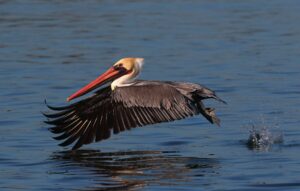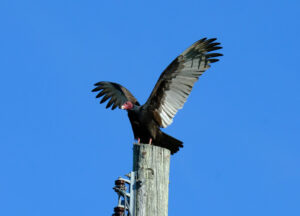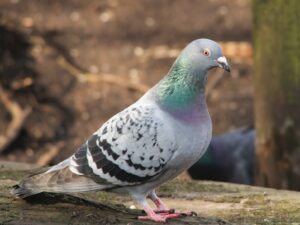Every year—fall to spring—the Bay Area plays host to millions of birds, some wintering over, others migrating through. Three of the area’s experienced birders offered to share with Bay Nature readers a few of their favorite spots for viewing this avian bounty. To the north, Rich Stallcup suggests Bolinas Lagoon on Hwy. 1 between Bolinas and Stinson Beach (start from the north and work your way south to prevent accidents crossing the road) and Bodega Harbor. For the harbor, turn off Hwy. 1 at Bodega Bay Lodge. According to Rich, high tide is the best viewing time, when many of the birds congregate in the southeast corner of the harbor. At any one time, 20 to 25 species of shorebirds may be within binocular range; up to 3,000 marbled godwits may be clustered together. In the East Bay, he suggests Berkeley’s Aquatic Park, south of University Ave. and just east of the freeway. There you can find lots of diving ducks, terns, and grebes. Across I-80, on the Bay side between Gilman and Ashby, you can see large numbers of bay ducks, including canvasbacks, redheads, and greater and lesser scaup.
For species diversity and beautiful views in San Francisco, Alan Hopkins likes the Railroad Bed Loop, which follows the Coast Trail from Cliff House to Eagle Point. Pick up a map at the Golden Gate National Recreation Center Visitor Center (by the Cliff House) and be treated to everything from pelicans, cormorants, and scoters in the ocean, to turnstones and tattlers on the shore, and late migrant land birds and winter residents in the trees. It was this loop that got Alan hooked on birding in the City.
To the south, Scott Terrill recommends Palo Alto Baylands (exit Hwy. 101 at Embarcadero East and travel east until it dead-ends, then turn left toward the Bay) for shorebirds, waterfowl, gulls, and terns along the marsh and open water, and for land migrants in trees around the ranger’s residence and in fennel patches. According to Scott, in December’s high-high tides, this is the best time and place to see endangered California clapper rails, which get flushed out of the vegetation by the rising water. Walk out on the boardwalk for the best views. You can also see black rails (near the education center), Virginia rails, and sora. Peregrine falcons are frequently spotted perched atop power poles, and thousands of diving ducks are in the Bay, along with western, eared, Clark’s, and horned grebes. A bit farther south, at Charleston Slough (take Frontage Road), you can observe the largest Bay Area population (about 10!) of a locally rare bird, the black skimmer. Finally, if you enjoy watching raptors, you definitely don’t want to miss Hawk Hill at the top of Conzelman Road in the Marin Headlands (see the results of last year’s hawk count in the April-June issue of Bay Nature).

.jpg)



